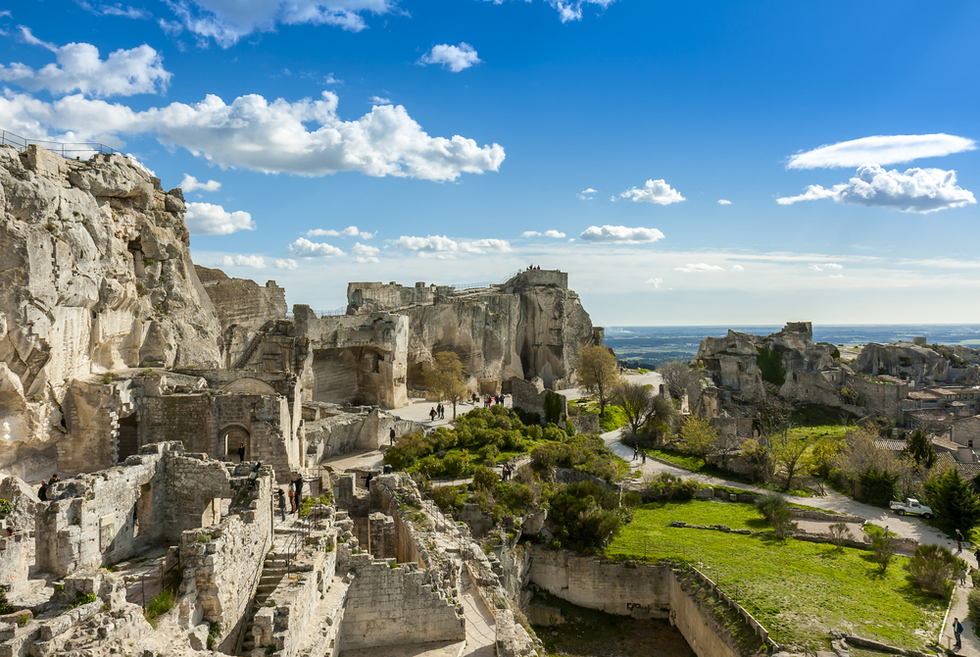715km (444 miles) S of Paris; 19km (12 miles) NE of Arles; 80km (50 miles) N of Marseille
Les Baux de Provence’s location and geology are extraordinary. Cardinal Richelieu called the massive, 245m (804-ft.) high rock rising from a desolate plain “a nesting place for eagles.” A real eagle’s-eye view of the outcropping would be part moonscape, dotted with archeological ruins and a vast plateau, with boxy stone houses stacked like cards on the rock’s east side. The combination is so cinematic that it seems like a living, breathing movie set.
Baux, or bayou in Provençal, means “rocky spur.” The power-thirsty lords who ruled the settlement took this as their surname in the 11th century, and by the Middle Ages had control of 79 other regional fiefdoms. After they were overthrown, Les Baux was annexed to France with the rest of Provence, but Louis XI ordered the fortress demolished. The settlement experienced a rebirth during the Renaissance, when structures where restored and lavish residences built, only to fall again in 1642 when, wary of rebellion, Louis XIII ordered his armies to destroy it once and for all. Today the fortress compound is nothing but ruins, but fascinating ones.
Now the bad news: Because of its dramatic beauty, plus a number of quaint shops and restaurants in the village, Les Baux is often overrun with visitors at peak times, so time your visit wisely.









